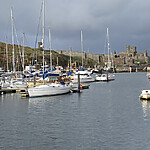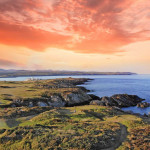Andy Mossack explores the Isle of Man, and reveals an island steeped in history and folklore, yet forward-thinking enough to be the World’s first UNESCO Biosphere nation.
For an island, 35 miles long and just 15 miles wide, the Isle of Man is a pocket- rocket packed with heritage, history, ancient folklore, breathtaking landscapes, Victorian ingenuity, and a welcoming community spirit. There’s also the small matter of its world-famous TT bike racing circuit and status as a major centre for offshore financial services.
As one of Britain’s three island nations, the Isle of Man, in the Irish Sea between Ireland and England, is perhaps perceived as the proverbial tourist wallflower when compared to Jersey and Guernsey. Perhaps not everyone’s immediate choice for a breakaway. But that wasn’t always the case.
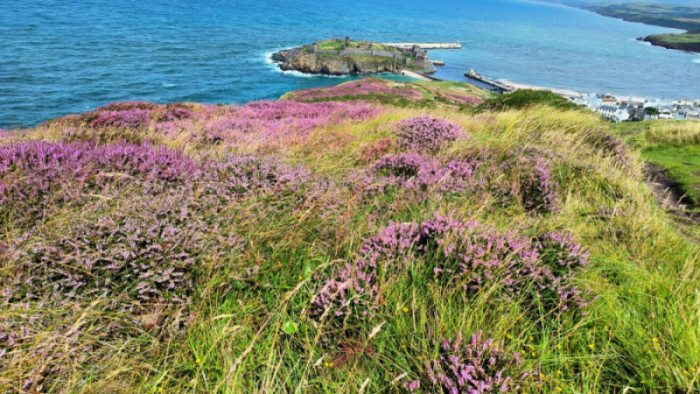
The Victorian era was a golden time for Manx when hordes of tourists flocked to the island each summer on the Steam Packet ferry from Liverpool attracted by glossy advertising hailing it as the closest continental resort to Britain. But with the emergence of cheap package holidays to Europe, the torrent dropped to a trickle and the Isle of Man had to look elsewhere for a sustainable income.
But let’s bin that wallflower perception because the Isle of Man has plenty to offer as a genuine holiday destination. So, buckle up and find out why.
Victorian Heritage
The influx of Victorian and Edwardian tourists proved so profitable the Isle of Man invested heavily in the latest technology of the time. State-of-the-art attractions, still in operation today, are beautiful examples of a bygone era.
The Manx Electric Railway at almost 130 years old is still looking spritely. Running north along the coast from the capital Douglas to Ramsey, the island’s second town, is essentially a tram that’s been in service since 1893 and is about to celebrate its 130th birthday. It’s a fun ride, rattling, screeching, and tooting its way along track hugging the Isle of Man’s craggy eastern coast while offering up spectacular views from either its closed or open carriages. You can stop off at Laxey and climb aboard the Snaefell Mountain Railway, just two years younger, and scale the summit of the island’s only mountain.


Another veteran of the golden era is the Isle of Man Steam Railway, the longest narrow gauge steam line in Britain that still uses its original locomotives and carriages. The train puffs its way from Douglas to Port Erin on the southwest coast. It’s also got something of a fancy restored dining car if you want the full golden era experience.


A somewhat more sedate ride can be had on the Douglas Bay Horse Tramway; another tram but pulled gently along Douglas’s promenade via shire horse from the Villa Marina theatre and back. It’s thoroughly charming and a relaxing way to see the Victorian sweeping promenade. Keep a watch out for the statue of the Bee Gees, born on the Isle of Man before the family emigrated to Australia.
All these activities are included in the Island’s Go Explore Heritage Card.
Walking and dipping
Kate Berquist-Leavey is not only a fully-fledged scouser, but an Isle of Man borderline legend. Walker, cold water dipper, canoeist, and all-around good egg runs Soul Adventures for outdoor wellness activities. It’s an opportunity to show people how connecting with the island’s natural world can be therapeutic on so many levels. Together with Rob Clynes, a professional cartographer and outdoor specialist, Kate took me for a scenic guided forest walk up Skyhill in the north of the island, a delicious picnic, and a cold-water sea dip on Laxey beach. We were supposed to take a dip in the lovely Ballaglass Glen pool, but the previous day’s rain had made it a little too rough.

“Please tell me which part of good for you is this madness?” I moaned. “Come on,” she said, “I’ve got dry robes, and we’ll have a great coffee and cake after, you’ll love it!” And I did! After a few minutes timidly tiptoeing into the cold sea, I took a deep breath and plunged in headfirst. Once I got over the initial shock, I was enveloped by warm tingling all over. Just a five-minute dip to shock the senses is healthy apparently, but I won’t deny it was the promised coffee and cake bribe that convinced me.
The island is covered in biking and walking trails. You could attempt the ‘way of the gull’ an 85-mile coastal path walk around the entire Island of Man. The island has the Parish Walk, an annual event that competitors must complete in 24 hours. Fortunately, you can take it a lot easier and do the walk in a number of stages. The views of the island’s craggy coast are extraordinary, and with plenty of wildlife, fauna, and flora to look for, it’s not difficult to see why the Island of Man was chosen by UNESCO as its first Biosphere Nation.
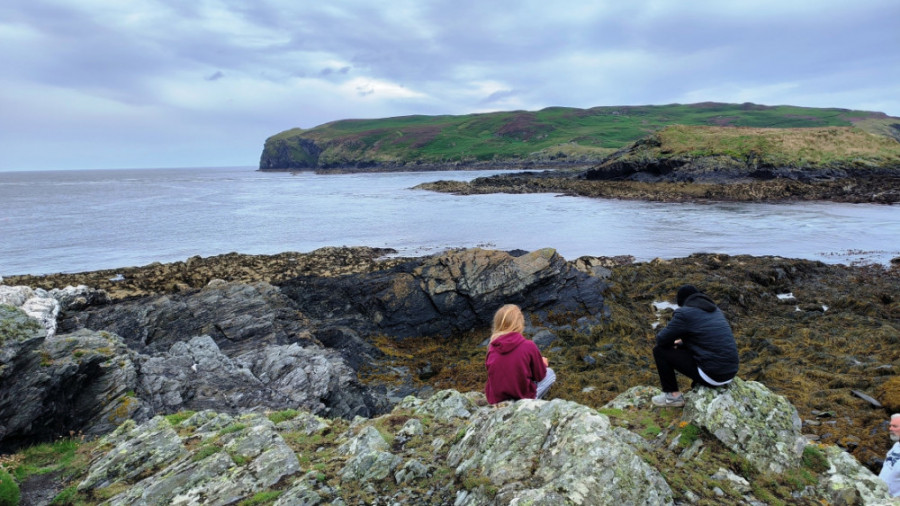
One of the most scenic spots is The Sound, down at the island’s southernmost tip. Plenty of seal action here, and you might also spot dolphin and basking sharks.

If you’re not a hardcore biker but fancy an easy way to enjoy a bike ride, I took an electric bike and cycled the Steam Heritage Trail across the island from Douglas to Peel. It’s a flat 20-mile out-and-back trail along the former railway route but you’ll meet plenty of other cyclists along the way and you can explore historic Peel before riding back.
TT circuit by Trike

The Isle of Man’s famed TT road circuit race started in 1907 and has been an annual event ever since. Each clockwise lap is 37.7 miles around the island’s narrow roads, running from the start in Douglas across to Peel then on to Ramsey, before climbing the Snaefell mountain stretch and returning to Douglas. It is fast and dangerous stuff for the riders, but you can experience some of the thrill on a guided three-wheeler motorbike tour around the circuit.
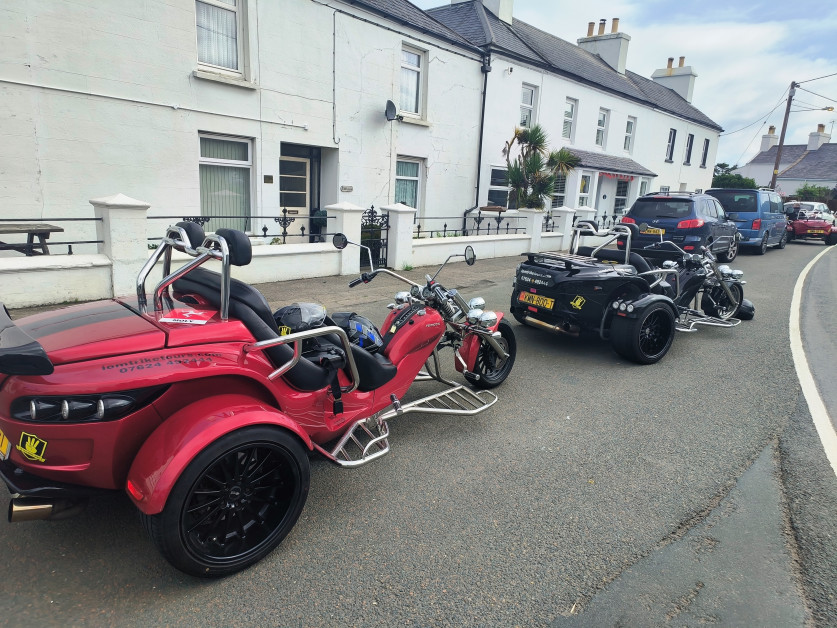
Put on leathers, wear a miked helmet, and listen to your driver’s commentary. You might even get up a bit of speed on the straights thanks to the no national speed limit law outside of town areas. Of course, you can drive the road circuit yourself from the start and finish straight at the Grandstand on Glencrutchery Road and follow the road signs and padding-wrapped lampposts and cushioned walls.
Castles and museums
With 10,000 years of human history here, it’s no surprise to find many museums, and some extraordinary ancient monuments still standing proudly. Castle Rushen in Castletown is one of the best-preserved medieval castles in the world. The former home of the Kings and Lords of Mann, you can wander the furnished rooms and battlements and learn about the cast of characters that lived here. During its long life, it’s been a royal home (Queen Charlotte surrendered to the Parliamentarian forces here during the English Civil War), a royal mint and a prison.

The Peel Castle ruins are also worth a visit, and there’s an audio guide included. The coast path surrounding the castle perimeter is almost at sea level so take the circular walk and try to avoid a crashing wave or two. If you’re in the walking mood you can also try to walk up Peel Hill to the stone tower of Corrin’s Folly. It’s a challenging walk but you’ll be rewarded with some fabulous views across Peel Beach, one of the best on the island.
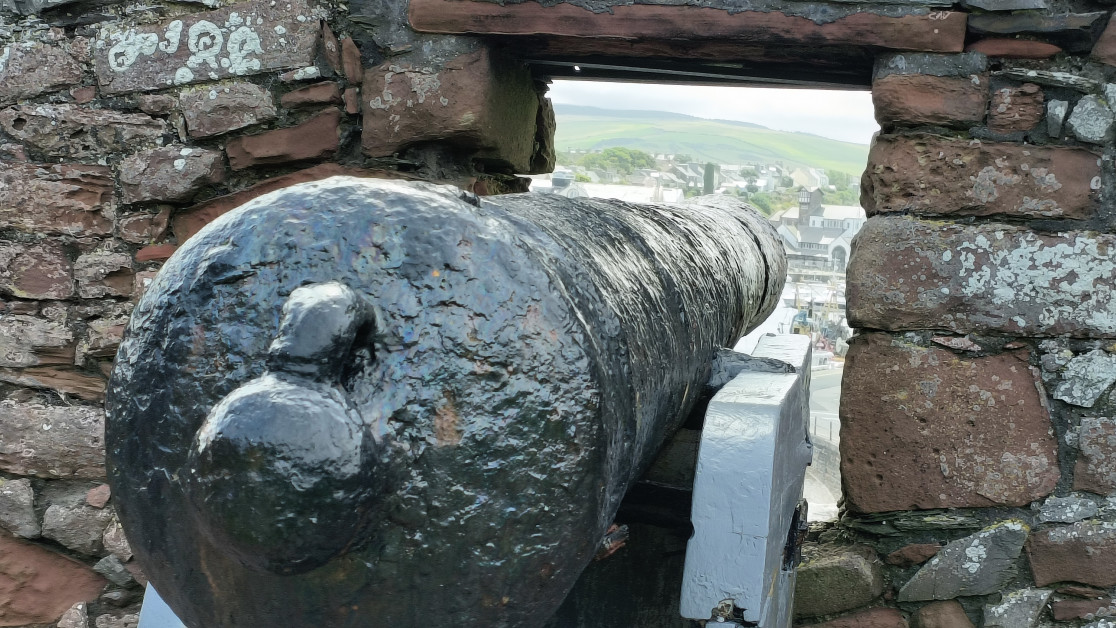
Don’t miss the House of Manannan, an absolute belter of a museum that takes you on a journey through the island’s Celtic, Viking, and maritime past. It’s one of the best museums I have visited in years. The café in there is pretty good too.

If you happen to be in Douglas, the Manx Museum also chronicles the island’s rich history. The newly opened TT exhibition there is excellent, explaining the history of the TT race and showcasing some of the legendary riders and their bikes.
Golf
The natural craggy terrain of an island offers a perfect canvas for golf architects, and the Isle of Man ticks every one of those boxes. Castletown golf links lies on a narrow spit of land with the Irish Sea bordering both sides of it and completely open to the wind no matter which direction it may blow. A challenge I was not going to miss out on. How did I fare? You’ll have to read my review of Castletown Golf Club to find out!
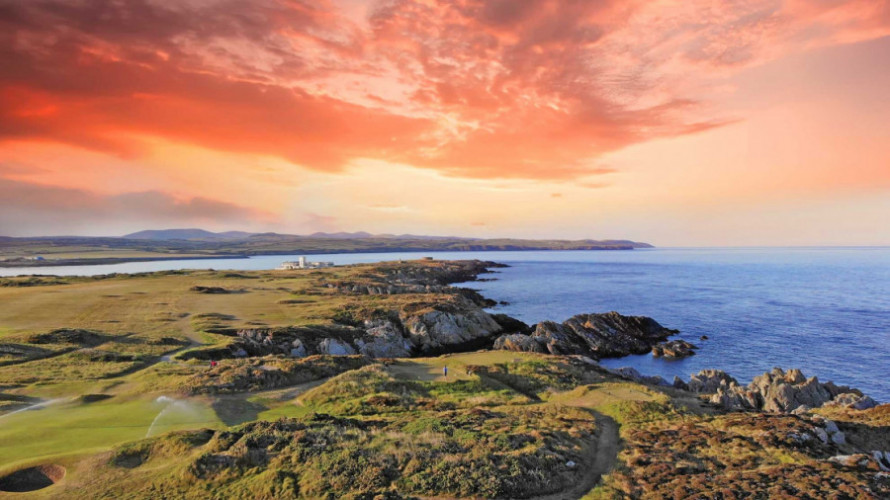
The Isle of Man is no waiting wallflower, more an underrated beauty about to be discovered again. Leave your preconceptions behind and just enjoy the ride!
All images (C) Andy Mossack except the steam train and cold water dip..
Tell me more about visiting the Isle of Man
For more information about visiting the Isle of Man please go to Visit Isle of Man tourism.
Getting to the Isle of Man
By Ferry
Isle of Man Steam Packet Company from Belfast, Dublin, Heysham or Liverpool. The crossing time from mainland UK and Ireland takes under 3 hours. Return foot passenger ferry fares to Douglas from the UK start from £48
By Air
Loganair from Liverpool, Manchester, Edinburgh, Birmingham or easyJet from Belfast, Bristol, Liverpool, London Gatwick or Manchester.
Flight time from mainland UK takes between an hour and 90 minutes; flights from Ireland take less than an hour. Return flights to London from £60
Isle of Man Trike Tours Experience a 2-hour guided trike tour (2 passengers and a guide driver) around the IOM TT Road circuit from £175 per trike. Many other island tours are available.
Isle of Man Go Explore Heritage Card
The best way to get a great sightseeing experience of the Isle of Man is to purchase a Go Explore Heritage card. These allow adults and children unlimited travel on all Isle of Man Transport scheduled bus and rail services plus admission to all Manx National Heritage sites. These are available for 5 days and cost £60 for adults and £30 for children 5 to 15 years.
Recommended hotel
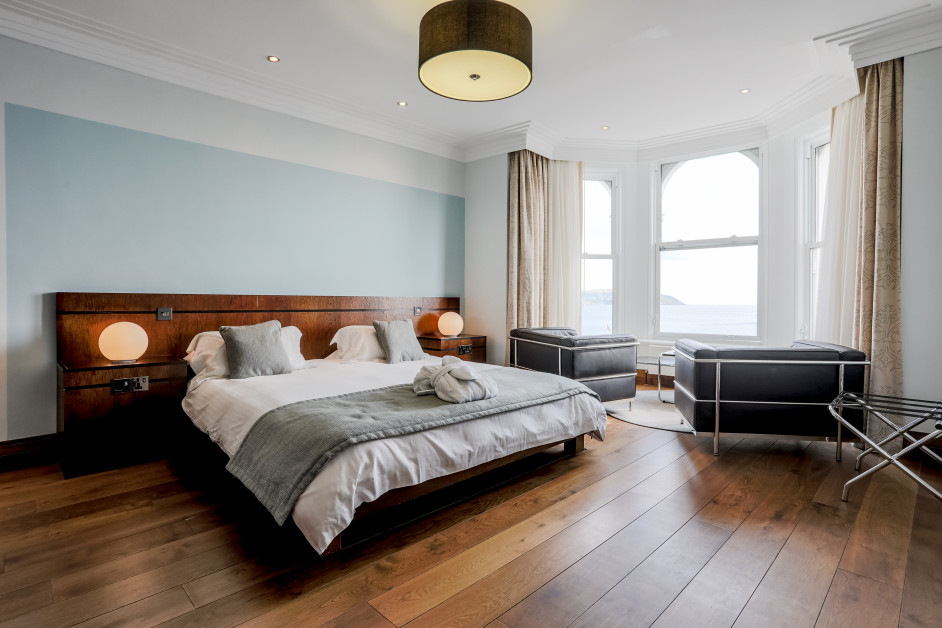
The Claremont Hotel is right on Douglas Promenade and just a few minutes’ walk from Douglas town centre. The best rooms are overlooking the harbour and include an excellent breakfast in the award-winning Coast Bar and Brasserie.
Recommended restaurants
Coast Within the Claremont Hotel this is an excellent value-for-money brasserie overseen by Head Chef Richard Birch, formerly of Pru Leith’s Michelin-starred restaurant in London.
Wine Down Wine Down is actually a long-established wine shop with a cosy bistro lined with bottles of delicious wines. The food is excellent, and you get to sample plenty of top wines by the glass.
Foraging Vinters You’ll find this cool craft winery hangout behind pink doors at Port Erin Harbour. It looks a little like a speakeasy parlour and produces unusual non-grape sparkling wines from ingredients like elderflower and rhubarb, ciders, ginger beer and rum. Wine tasting is available, and you can munch on southern-style barbecue dishes courtesy of Matt Hawkins’ smokery.
14 North. Sited on Douglas’s cool north quay, where restaurants line the marina, 14 North showcases fresh ingredients from the island’s farms and artisanal producers. The portion sizes are very impressive, and the dishes delightfully creative.
Versa. A very different experience from your run-of-the-mill fine dining, Versa turns high-end cooking on its head (AKA vice-versa) by creating dishes from foraging invasive plant species. Chef/owner Pippa is formerly from famous NOMA and is solely focused on using fully sustainable ways to create her delicious dishes no matter how difficult it may be to find. Probably why Versa is only open three days a week!


